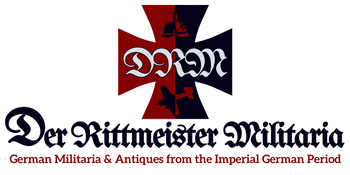Saxe-Altenburg (Herzogtum Sachsen-Altenburg)
CLICK HERE FOR ALL ITEMS RELATED TO SAXE-ALTENBURG
Basic Information
- Official Name: Duchy of Saxe-Altenburg (Herzogtum Sachsen-Altenburg)
- Capital: Altenburg
- Motto: "Providentiae Memor" (Mindful of Providence)
- Established: 1826 as a duchy (earlier part of Saxe-Gotha-Altenburg)
- Dissolution: Transitioned to the Free State of Saxe-Altenburg in 1918 following the abdication of Duke Ernst II.
-
Key Symbols:
- Coat of Arms: Features a green crown of rue on a shield with alternating gold and black horizontal stripes.
- Flag: Green and white horizontal stripes.
Geographical Overview
-
Location:
Situated in central Germany, bordered by Prussia, Saxe-Weimar-Eisenach, and other Saxon duchies. -
Size:
A small state known for its agricultural lands, forests, and modest urban centers. Key towns included Altenburg and Schmölln. -
Land Features:
- Pleiße River: Provided irrigation for agriculture and small-scale trade.
- Thuringian Highlands: A region of natural beauty with rolling hills and forests.
Historical Timeline
-
Early Saxe-Altenburg:
- 1603: Formed from the division of Ernestine Saxon territories.
- 1672–1826: Temporarily absorbed into Saxe-Gotha-Altenburg.
-
Duchy Era (1826–1918):
- 1826: Re-established as a separate duchy following the extinction of the Saxe-Gotha-Altenburg line.
- 1871: Integrated into the German Empire while retaining its internal autonomy.
-
Decline (1918):
- The abdication of Duke Ernst II during the German Revolution marked the end of the duchy, transitioning to a Free State.
Notable Rulers and Leaders
- Ernst I (1826–1834): The first duke of the re-established duchy, focused on administrative reforms.
- Ernst II (1908–1918): The last duke, remembered for his abdication and peaceful exit from power during the German Revolution.
Military and Political Strength
-
Military Contributions:
- Saxe-Altenburg contributed a small but effective contingent to the Imperial German Army.
- Known for its cavalry units, often integrated with other Saxon regiments.
-
Political Role:
- Governed as a constitutional monarchy with representation in the Reichstag.
- Played a supportive role in Prussia-led German unification.
Cultural Contributions
-
Architecture:
- Altenburg Castle: A medieval fortress turned Renaissance palace, symbolizing the duchy’s history.
- Church of St. Bartholomew: A landmark of Altenburg, reflecting Gothic and Baroque influences.
-
Arts and Literature:
- Altenburg was a center for folk music and traditional Saxon crafts.
- Supported regional writers and poets who celebrated rural life.
-
Education and Science:
- Home to schools emphasizing agriculture and forestry, reflecting the duchy’s economy.
- Early adoption of modern irrigation techniques in farming.
-
Cuisine:
- Known for Thuringian sausage and Altenburger Ziegenkäse (goat cheese).
- Popular local desserts included fruit-filled dumplings and cakes.
Fall of Saxe-Altenburg
-
World War I (1914–1918):
- The war strained the duchy’s economy and resources.
-
German Revolution (1918):
- Duke Ernst II abdicated, and Saxe-Altenburg transitioned into a Free State before merging with Thuringia in 1920.
-
Post-WWII (1945):
- Incorporated into East Germany and later into modern Thuringia after reunification.
Connections to Products
-
Cultural Artifacts:
- Miniatures and artwork featuring Altenburg Castle.
- Saxon folk art, including traditional wood carvings and textiles.
-
Military Memorabilia:
- Medals and badges from Saxe-Altenburg regiments within the Imperial German Army.
- Uniforms and ceremonial weapons associated with the duchy.
-
Historical Documents:
- Maps and records detailing the duchy’s administrative history.
- Correspondence from the ducal family, particularly during the German unification period.
-
Tourism and Culinary Items:
- Guidebooks and postcards featuring Altenburg’s landmarks.
- Recipe books and tools for preparing Thuringian sausage and local desserts.
-
Educational Memorabilia:
- Historical records from Altenburg’s agricultural and forestry schools.
- Publications showcasing the duchy’s advancements in sustainable farming.









